Ford Bronco Sport Vs Jeep Cherokee: Which SUV is Right for You?

They might compete in two different segments, but the Ford Bronco Sport and Jeep Cherokee have similar mission statements.
What we’re looking at here is the likely volume leader of the new Bronco family. As cool as the new Bronco is—very, and you should read our in-depth launch article about it—the realities of the current market suggest the Bronco Sport will sell in larger numbers. It’s the more everyday-friendly package, while still offering increased off-road prowess over anything else in the sub-compact class. In that way, it’s arguably more of a unique entry in the landscape.
Get a Quote on a New Ford Bronco Sport or Jeep CherokeeThat’s why we’re looking a class up for this comparison. Once we wade into compact crossover land, one model has clear similarities to Ford’s new model: the Jeep Cherokee. The Cherokee also aims for a happy middle ground between everyday crossover usefulness and the brand’s reputation for road-free adventures. Jeep has even gifted the Cherokee with its prized Trailhawk badge, a sign of its rock-crawling, river-fording abilities. Here’s how the other Bronco-versus-Jeep battle goes down on paper.
Cabin Space
Bronco Sport: The BroSpo’s upright posture and dual-level roof translates to plenty of head room in both rows. Those in the back row benefit from 41.7 inches (1,059 mm) of the stuff, and the front isn’t far off at 41.5 inches (1,054 mm). Spec the moonroof and we’re still talking 39.1 inches up front—the second row number is unchanged. Leg room sees a bigger gap: 42.4 inches (1,077 mm) for the front row, and 36.9 inches (937 mm) in the back.
SEE ALSO: 2021 Ford Bronco Sport Review: Full of Bucking CharacterAs the slightly wider of these two vehicles, the Bronco Sport has more hip- and shoulder room than the Cherokee. The exception is the front shoulder room, where its 57.3 inches (1,455 mm) is just shy of the Jeep at 57.6 inches (1,465 mm).
Cherokee: The Cherokee’s curvy exterior prioritizes style over interior space. There’s enough space for two adults in the rear row, but if you’re looking for the maximum amount of real estate for humans, other compact crossovers are the choice here.
That said, there’s an ample 39.4 inches (1,000 mm) of headroom in front of the Cherokee, and that shrinks only by an inch for second row occupants. Leg room has the same sort of gap: you’ll find 41.1 inches (1,044 mm) to stretch out up front and 40.3 (1,024 mm) to do the same in back. As mentioned above, the narrower Cherokee has less second-row shoulder room, and less hip room in both rows.
Bottom Line: Despite its smaller footprint, the Bronco Sport beats the larger Cherokee in every measure bar two: front shoulder and rear leg room. If you—or your regular passengers—can manage the 0.3 and 3.4 inch differences, respectively, the Bronco feels the more spacious of the two.
Cargo Space and Towing
Bronco Sport: Due to other features, the Bronco Sport’s storage space depends on the equipped engine. Ford says you’ll find 29.4 cubic feet (833 L) of storage behind the rear seats of the 2.0-liter model, and 32.5 cubes (920 L) for the 1.5-liter. Both numbers shrink a tiny bit with the optional moonroof. Fold the rear row down and the Bronco offers anywhere from 60.1 to 65.2 cubes (1,702–1846 L).
Towing capacity is capped at 2,000 lb (907 kg) for the three-cylinder, and just 200 lb (91 kg) more for the 2.0-equipped Badlands.
Cherokee: Jeep quotes a smallish 24.6 cubic feet (697 L) of storage in the Cherokee’s trunk, but you can drop the second row seats to liberate up to 54.7 cubes (1,549 L).
Towing capacity is tied to engine choice in the Cherokee. The base 2.4-liter matches the Bronco Sport’s turbo three-cylinder at 2,000 lb (907 kg), while the 2.0-liter turbo doubles that to 4,000 (1,814 kg). Those needing the most towing capacity in the compact class will want the V6, which bumps the number to 4,500 lb (2,041 kg).
Bottom Line: Any way you slice it, the Bronco can carry more stuff. It can’t tow more, though: for that, you clearly need the Cherokee.
Technology and Features
Bronco Sport: An 8.0-inch touchscreen takes up residence in the center console, running Ford’s SYNC3 platform. That’s a one-size-fits-all approach for every trim, it’s important to note. Other optional convenience features include a 10-speaker Bang & Olufsen sound system, power moonroof, and wireless charging. Other practical touches include storage cubbies under the rear seat cushions, and a built-in bottle opener in the (dual-opening) tailgate.
Cherokee: An upgraded Alpine stereo is optional on lower trims, and standard on the mid-level Limited upwards. The Limited is also where Jeep’s 8.4-inch Uconnect shows up; lower down the trim totem you’ll find the smaller 7.0-inch item. 4×4 models include a hill descent assist, and all Cherokees feature a hill start aid. A new Latitude LUX model brings smooth Nappa leather to the middle of the trim walk instead of the exclusive reserve of the Limited.
SEE ALSO: Jeep Cherokee vs Grand Cherokee: Which Jeep SUV is Right for You?Bottom Line: We like that every Bronco Sport has the same infotainment setup, but the upgraded one in the Cherokee is slightly better. The wider range of models within the Jeep lineup means there’s a better chance to find the right fit for your needs—but being the older model, its interior is starting to feel its age.
Powertrain
Bronco Sport: Ford will sell you a Bronco Sport with one of two turbocharged EcoBoost engines. A 1.5-liter three-cylinder produces 181 hp, 190 lb-ft of torque, and a charming three-pot thrum. The 2.0-liter engine straps another cylinder on, with a projected 245 ponies and stout 275 lb-ft. Both engines hook up to Ford’s eight-speed automatic transmission, with the larger engine option adding steering wheel-mounted shift paddles for the driver.
More importantly, the Bronco Sport only comes with four-wheel drive. There’s no front-drive options anywhere here, the clearest indication from Ford that while this is a crossover, it still deserves the Bronco name.
Cherokee: Jeep’s compact crossover offers a wider range of choices than the littler Ford. At the start of the model ladder is a 2.4-liter naturally-aspirated four-pot. It’s a close match for the Bronco’s triple, putting out 180 hp and 171 lb-ft of torque. Higher trims come with a 3.2-liter nat-asp V6, which bumps up power to 271 lb-ft and torque to 239 lb-ft. Jeep does offer a turbo engine option on most trims, also 2.0 liters in size. It gives up a single pony to the V6, but produces significantly more torque at 295 lb-ft. That’s usefully more power and torque than the Bronco’s identically-sized engine. No matter which engine you pick, you’ve got a nine-speed automatic sending the power to the wheels.
Unlike the Ford however, the larger Cherokee can come in two-wheel drive form. Front-wheel drive is standard on lower trims, though four-wheel is optional, and standard on higher trims like the Trailhawk.
SEE ALSO: No Jeep is Working Harder for Your Love Than the Cherokee Trailhawk (in Moab)Bottom Line: In terms of choice, the Cherokee wins: you’ve got two drivetrains and three engines to pick from. The Bronco Sport lineup is simpler, with 4×4 capability across the board and a choice of two engines. It’s a win for the Cherokee.
Off-Road Capability
Bronco Sport: Staying on brand, Ford announced the Bronco Sport’s off-roading credentials as part of its debut, including things like ground clearance and water fording depth. In Badlands trim with the optional 29-inch all-terrain tires, the Bronco Sport boasts a best-in-class 8.8 inches of ground clearance. Its approach, breakover, and departure angles are 30.4, 20.4, and 33.1 degrees, respectively. Lastly, the Bronco Sport will ford through streams with a depth of 23.6 inches or shallower.
Cherokee: For the fairest comparison, we should look at the Cherokee Trailhawk here. Sitting on its own all-terrain tires, the Trailhawk features 8.7 inches of ground clearance. It’s practically a tie, but a win is a win for the Ford. In the angles race it’s a little less clear: with scores of 29.9/22.9/32.2 degrees, respectively, the Cherokee loses to the Bronco on both approach and departure, but has a larger margin of victory for the breakover angle. Water fording is set at 20 inches even.
Bottom Line: At least on paper, this looks like a close win for the Bronco Sport.
Fuel Economy
Bronco Sport: The EPA rates the smaller-engined Bronco Sport at 25 mpg city, 28 mpg highway, for a combined 26 mpg rating. The Canadian equivalent figures are 9.3, 8.3, and 8.9 L/100 km, respectively. Opt for the Badlands and its larger 2.0-liter mill, and the scores drop to 21/26/23 mpg (11.1, 8.9, 10.1 L/100 km).
Cherokee: The Cherokee’s myriad engine and drivetrain options make for a wide range of fuel economy figures. It’s important to note the base engine is not the most efficient: it’s the 2.0-liter turbo, which scores 23 mpg city (10.4 L/100 km), 31 mpg highway (7.6 L/100 km), and 26 mpg combined (9.1 L/100 km) in front-drive form. Opting for AWD drops 2 mpg from every measure; Canadian figures are 11.2, 8.0, and 9.8 L/100 km, respectively. The 2.4-liter scores identical 4WD numbers, so unless you’re on a tight budget, we’d recommend the turbo.
Jeep also offers an uprated Active Drive II 4×4 system, available with the 2.0- and 3.2-liter engines. This chops the fuel economy further, to 20/27/23 mpg (11.5/8.6/10.2 L/100 km) for the turbo, and 18/26/21 mpg (12.8/9.0/11.1 L/100 km) for the V6. The Trailhawk, only available with the latter engine, posts 24 mpg highway (9.7 L/100 km).
Bottom Line: The Jeep’s wide range of drivetrains allows it to be slightly more efficient in certain trims. When comparing the two most similar drivetrains (2.0-liter Bronco Sport, 2.0-liter Active Drive II Cherokee), they’re essentially at par, despite the Jeep being the larger vehicle.
Safety
Bronco Sport: The Basic Co-Pilot360 suite, standard on all BroSpos, includes automated emergency braking with pedestrian detection, blind spot warning, forward collision warning, lane-keep assist, and auto high beams. There are two higher-up Co-Pilot360 packages (Assist+ and Assist 2.0), which add things like adaptive cruise control (with stop-and-go), lane centering, and speed sign recognition.
The IIHS recently awarded the Bronco Sport its highest Top Safety Pick + designation. The NHTSA has yet to score the little ute.
Cherokee: For 2021, Jeep got with the times and made a solid lineup of active driver assists standard on all Cherokees. This includes automated emergency braking, blind-spot monitoring, rear cross-path detection, lane departure warning, lane keep assist, and rain-sensing wipers. Adaptive cruise control and a parking assist are only standard on the top Limited, and part of a package on the Trailhawk.
The NHTSA rates the Cherokee 4-stars for frontal impacts and 5-star for side impacts. It does not earn a Top Safety Pick rating from the IIHS.
Bottom Line: Jeep including its driver aids as standard starting in 2021 makes this a much closer match-up now. Its unexceptional performance in the IIHS and NHTSA testing hands the win to the Ford, however—barring some unusual NHTSA results for the Bronco Sport.
Styling
Bronco Sport: We’re happy to report the Bronco Sport doesn’t look like a reskinned Escape with big-bro Bronco styling cues. The Sport is still boxy, but the proportions work on the smaller footprint, at least to our eyes. The bluff nose with its round headlights and intersecting DRLs make the family connection, while a tall greenhouse suggests great sight-lines out. A tidy rear treatment also allows the Sport to look less like a Wrangler than the regular Bronco, though we’d argue that’s down to the dual necessities of heritage styling and packaging for the bigger model.
Cherokee: Chances are you had a strong opinion on the Cherokee’s looks when it first arrived in the middle of the last decade. Jeep facelifted it for 2019, dropping the squinty headlights for more traditional—some may say boring—units. The angular wheel arches and distinctive rear treatment remain however, setting the Cherokee apart from other cars on the road and indeed within the Jeep lineup at large.
Bottom Line: As always, style is subjective. The fresher looks of the Bronco Sport sway us, though.
SEE ALSO: Jeep Cherokee vs Compass: Which Crossover is Right For You?Pricing
Bronco Sport: Ford is charging a premium for the Bronco Sport, no doubt in part due to its nature as a spin-off of one of the brand’s icons. The sub-compact actually lists for more than the larger Escape. MSRP plus destination is $28,315 ($34,019 CAD) for a Bronco Sport Base, versus $27,630 for an all-wheel drive Escape S.
That entry price will net you the 1.5-liter three-pot engine: an eight-speed auto and 4×4 drivetrain are standard no matter which trim you pick. Next up the ladder is the $29,815 ($36,099 CAD) Big Bend, followed by the Outer Banks at $33,815 ($39,599 CAD). The Badlands is only $500 more than the Outer Banks, and it’s the cheapest option to pick up the more powerful 2.0-liter turbo-four. As it prioritizes off-roading even more than the Outer Banks trim, the Badlands sticks to cloth seats, smaller all-terrain tires, additional drive modes for its Terrain Management System, and metal bash plates. At the top of the pile is the limited-edition First Edition. It combines the off-road chops of the Badlands with more interior amenities and unique styling elements. Ford will build just 2,000 First Editions, and it’ll set you back $39,995 if you’re lucky enough to get your hands on one.
Cherokee: The Cherokee is priced very similarly to the Bronco Sport. It starts at just $28,255 ($34,860 CAD), though it’s important to note that’s for a front-drive Latitude model. A 4×4 model will run you $1,500 more. Only the Trailhawk is available only as a 4×4. Meanwhile the cheapest way into a standard V6 in the US is the $32,090 front-drive Latitude Lux; for Canada, it’s the North 4×4 at $41,360 CAD.
Looking for the most off-road-appropriate model? That’ll be the Trailhawk, which starts at $36,250 ($44,860 CAD) with the 3.2-liter V6. At the top of the pile is the High Altitude. Opt for that and the turbo engine and you’re looking at a price tag of $37,990 ($47,805 CAD). It’s less than the Bronco First Edition—though every exterior color except white is an at-cost extra.
Bottom Line: In terms of metal-for-the-money, the Cherokee wins, with a lower entry point for the bigger model. That’s before we factor in any price gouging Ford dealers might partake in, as well as discounts on the older Jeep.
In Conclusion
If you’re looking for a smaller crossover that’s ready for the occasional off-road bash, Ford has a winner on its hands with the Bronco Sport. It’s smaller than the Cherokee but its boxier shape minimizes any interior space differences between the two. It is pricier though, and offers less drivetrain options to fine-tune where it lands on the road/rocks spectrum.
Become an AutoGuide insider. Get the latest from the automotive world first by subscribing to our newsletter here.

Kyle began his automotive obsession before he even started school, courtesy of a remote control Porsche and various LEGO sets. He later studied advertising and graphic design at Humber College, which led him to writing about cars (both real and digital). He is now a proud member of the Automobile Journalists Association of Canada (AJAC), where he was the Journalist of the Year runner-up for 2021.
More by Kyle Patrick



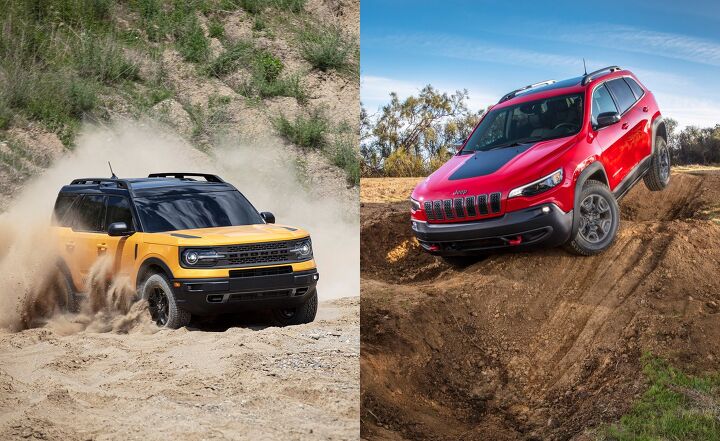
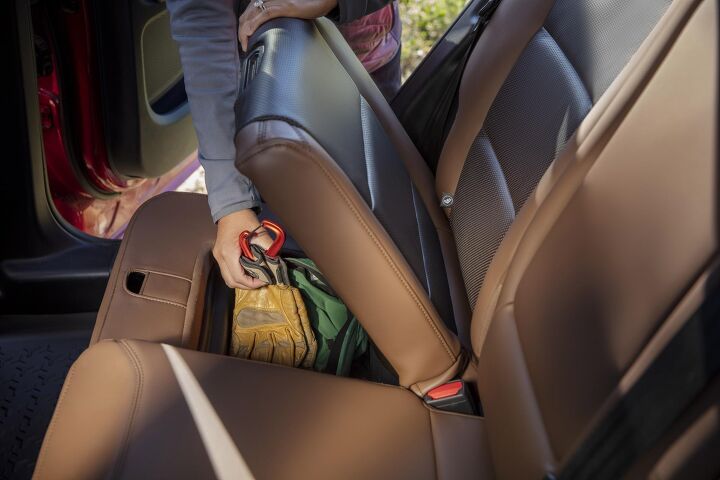


























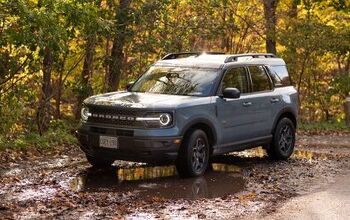

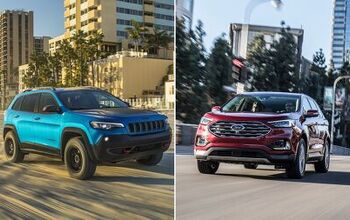
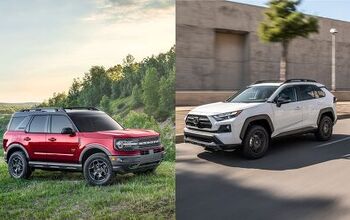
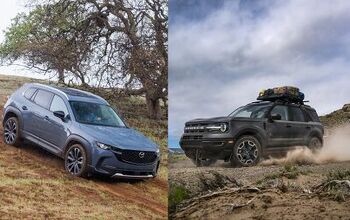


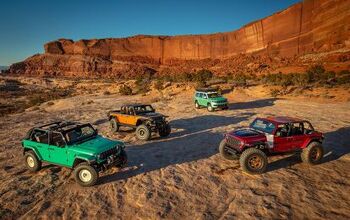
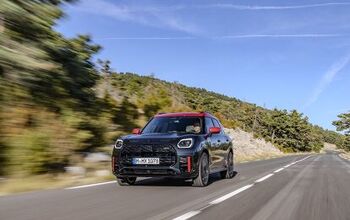
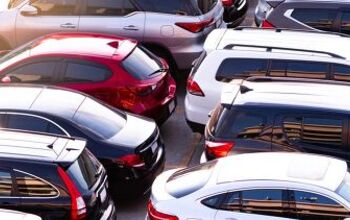


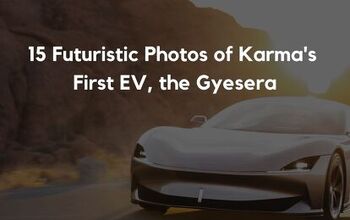
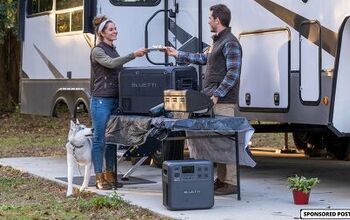

Comments
Join the conversation